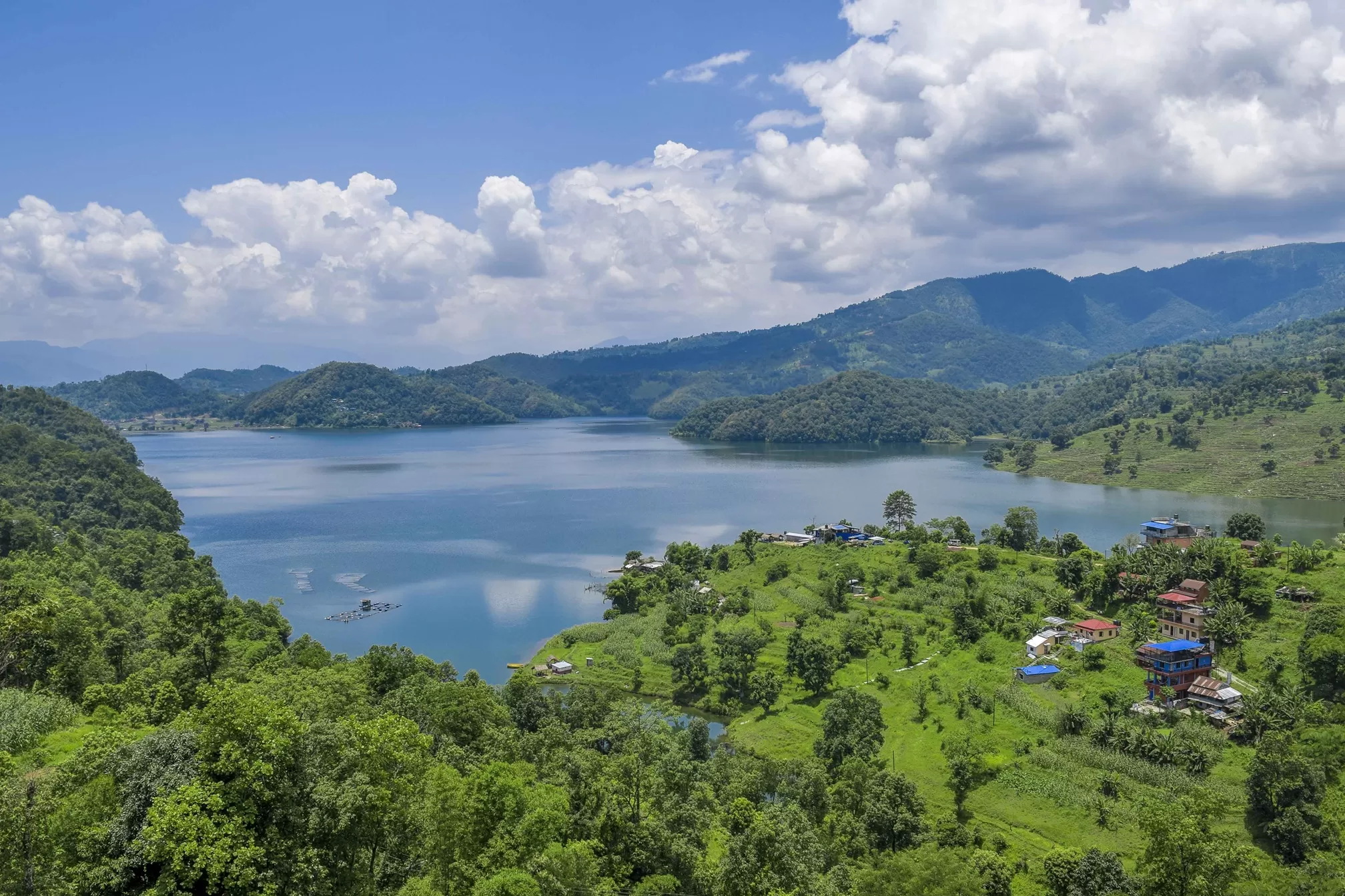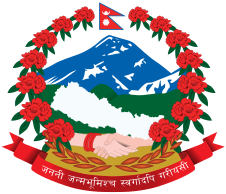Begnas Lake under encroachment

Fifty houses have been erected around Begnas Lake in Kaski without following the building code issued by Lekhnath Municipality.
Although the municipality prohibits construction within a 100-meter periphery of the lake, many hotel and restaurant buildings have been built close to the lake.
Laxmi Prasad Tripathi of the Lekhnath Chamber of Commerce and Industry said the lake area is being encroached upon, but the municipal authority is not doing anything about it. “There is also the environmental risk. If the businesses are allowed to operate close to the lake, others will inevitably join, and the lake will be polluted,” Tripathi said. Lok Bahadur Bhandari, executive officer of the municipality, said a notice has been issued to the business owners asking them to set up their establishments at least 100 meters away from the lake.
1. What is the activity taking place at Begnas Lake, Pokhara?
Begnas Lake is being encroached upon fast with illegal colonies, commercial establishments, and unlawful occupation of the area. All this is decreasing the area of the lake, deteriorating its water, and altering its natural current. Previously, Begnas Lake was an unexploited natural attraction, and it is now at the mercy of man-made encroachment, which has sounded the alarm among the locals, environmentalists, and tourists.
2. Is Begnas Lake really under encroachment?
It is, in fact, authenticated reports and visual counts that Begnas Lake is undergoing rapid encroachment. Illegal constructions, fill-in, and farm activity in the vicinity of the lakeshore are closing off natural buffers of the lake. Although the encroachment is not as grave as at Phewa, however, it's rapidly degrading and immediately in need of remediation so that the ecosystem and natural attractions of the lake won’t further deteriorate.
3. Whose expansion is it that is happening along Begnas Lake?
Begnas Lake encroachment is done with the help of area encroachers, free-wheeling developers, and inefficient enforcement by the authorities. Some of them exploit the gap in the laws to seize the land, and the others secretly construct houses or commercial centers. Lack of proper vigilance and coordination between the Pokhara Metropolitan City and environmental groups is the reason behind the proliferating menace.
4. How is the encroachment impacting the lake's ecosystem?
The Begnas natural shoreline is fragmented and dissected; it reduces its water storage and contaminates the ecosystem. Construction sedimentation, agrarian runoffs, and garbage tipping cause biological loss of biodiversity and decreased water quality. Local vegetation and fish populations are stressed more and more, and the natural beauty of the lake is being compromised by fast, uncontrollable growth.
5. What is the effort of the district governments to save Begnas Lake?
The district authority, with the passage of time, has implemented evictions and sown boundary demarcations to try and deter future encroachment. Environmental studies and protection policies of the lakes have been initiated, but enforcement is ineffective. Though community outreach is being continued, successful, integrated enforcement with penal implications is the solution to adequately sustain and renew Begnas Lake's borders.
6. How does encroachment at Begnas Lake impact tourism and livelihoods?
Effects of Begnas Lake encroachment on livelihood and tourism. Begnas Lake encroachment is destructive to livelihoods and tourism. Tourists seek peaceful, clean places, ravaged by unauthorized structures and pollution. Local fishermen, farmers, and tour operators lose as well, due to dropping water levels and loss of biodiversity. The cultural and environmental value of the lake is being stripped away, with the long-term sustainability of the location as a tourist destination being jeopardized.
7. Are there any protests or movements among the community to rescue the lake?
Environmental movements and grassroots movements spearheaded by the young ones have also expressed their outrage over Begnas Lake encroachment as well. Local newspapers, environmental groups, and responsible citizens have already initiated awareness campaigns, pressure groups, and clean-up movements. But the process still has to gain wider publicity, wider citizen engagement, and political backing to fully prevent future destruction.
8. It is illegal in Nepal to intrude on lakes.
There are laws protecting the environment in Nepal with the Environment Protection Act and special arrangements with the Local Government Act in attempts to prevent encroachment. There is safeguarding of lakes and wetlands with the country's conservation directives, yet enforcement is inconsistent. Municipal councils can fine or remove unauthorized constructions, yet enforcement is frequently absent in transparency and speed. 9. Ways the travelers and residents may help sustain Begnas Lake. The residents can register environmental crimes, become members of conservation organizations, and adopt green behavior. Tourists can foster ecologically responsible visitation, do not litter, and select community-based guides that foster responsible visitation. Both can engage in cleanups, sensitize others, and influence the powers that be via petitions or community gatherings to maintain the natural integrity of Begnas Lake. 10. Does the district possess any long-term protection and conservation plan for Begnas Lake? Although many proposals are available, an integrated long-term protection plan for Begnas Lake has yet to be developed. Activities involve demarcation of lake limits, controlling land use, and encouraging ecotourism. The Pokhara Metropolitan City has touched on conservation plans of the lake, yet without community engagement and strong political will, sustainable protection is far away.


.png)
.png)






